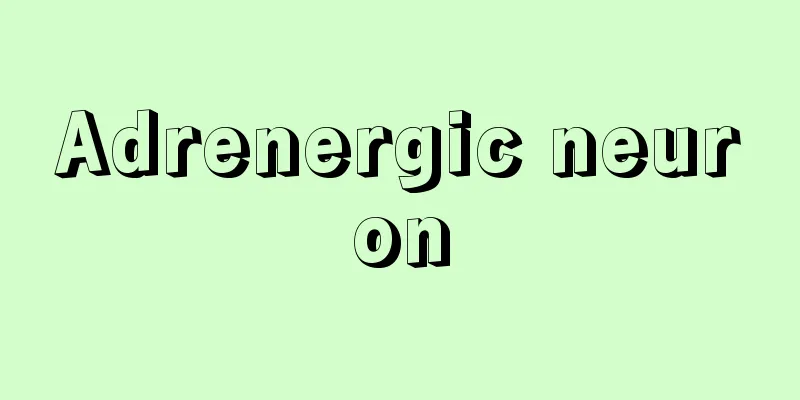Drawing - Sakuzu

|
Creating a figure that satisfies given conditions. Usually, construction in elementary geometry refers to drawing with a ruler and compass, where a ruler is used to draw a line passing through two points, and a compass is used to draw a circle with a given radius centered on a given point. Then, the intersection of two lines, the intersection of a line and a circle, and the intersection of circles are used to construct the required points, lines, circles, triangles, etc. The theoretical treatment of construction problems can be divided into the following four stages. [1] Analysis: Once you have obtained what you are looking for, find clues to help you draw it. [2] Drawing: This section shows how to draw based on the clues obtained. [3] Proof: Prove that the drawing made by this method meets the requirements. [4] Examination: Check how many items are available that meet your requirements. [Minoru Kurita] Basic Drawing(1) To construct the midpoint of a line segment AB and a straight line (perpendicular bisector) perpendicular to AB through this point ( ). (2) To draw a perpendicular line to a line from a point on the line ( ). To draw a perpendicular line to this line from a point outside the line. (3) To construct an angle bisector ( ). (4) To construct an angle of a given size with a given half line as one side ( ). (5) To draw a line parallel to this line through a point outside the line ( ). (6) To construct a triangle with three given lengths as its three sides. (7) To draw a circle passing through three points not on a line ( ). (8) To draw a circle with a given line segment as its diameter. (9) To draw a tangent to a circle at a point on its circumference. (10) To draw a tangent to a circle from a point outside the circle ( ). (11) To draw an arc with a given line segment as its chord and a given angle ( ). [Minoru Kurita] Various drawing methods[1] Method of intersection of loci Point P is divided into given conditions C1 and C2 , and point P is found as the intersection of the loci of points that satisfy each condition. For example, point P, which is equidistant from three points A, B, and C, is found as the intersection of the locus of points that are equidistant from A and B (the perpendicular bisector of line segment AB) and the locus of points that are equidistant from B and C (the perpendicular bisector of line segment BC). [2] Constructions that use transformations of figures Construction methods that use transformations include the parallel transformation method, the symmetric transformation method, and the rotation transformation method. For example, if three straight lines a, b, and c are given, and a line perpendicular to c is drawn, and for intersections A, B, and C with a, b, and c, to make C the midpoint of the line segment AB, it is sufficient to take the intersection point B between the line symmetric to a and b with respect to c. Construction methods that use the expansion and contraction of figures are called similarity methods. For example, a square is inscribed in an acute triangle by placing one side on the side of the triangle ( ). [3] Algebraic Analysis This is a method of drawing that uses the following: (1) Knowing the lengths a and b, create line segments whose lengths are the sum and difference. (2) Knowing the lengths a, b, and c, find the length ab/c. (3) Knowing the lengths a and b, [Minoru Kurita] ©Shogakukan "> Basic drawing (Figure A) ©Shogakukan "> Basic drawing (Figure B) ©Shogakukan "> Basic drawing (Figure C) ©Shogakukan "> Basic drawing (Fig. D) ©Shogakukan "> Basic drawing (Figure E) ©Shogakukan "> Basic drawing (Figure F) ©Shogakukan "> Basic drawing (Figure G) ©Shogakukan "> Basic drawing (Figure H) ©Shogakukan "> Drawing using geometric transformation (similarity method) [Diagram… ©Shogakukan "> Algebraic Analysis (Figure J) Source: Shogakukan Encyclopedia Nipponica About Encyclopedia Nipponica Information | Legend |
|
与えられた条件を満足する図形をつくること。普通、初等幾何における作図というのは、定規(定木)(じょうぎ)とコンパス(円規)による作図のことであって、定規は2点を通る直線を引くことに、コンパスは与えられた点を中心として与えられた半径をもつ円をかくことに用いられる。そして、2直線の交点、直線と円の交点、円と円の交点を使って要求にあう点、直線、円、三角形などを作図する。作図の問題の理論的な扱いは、次の四つの段階に分けられる。 〔1〕解析 求めるものが得られたとして、それを作図する手掛りをみいだす。 〔2〕作図 得られた手掛りを基にして作図する方法を示す。 〔3〕証明 この方法で作図したものが要求にあうものであることを証明する。 〔4〕吟味 要求にあうものがいくつあるかを調べる。 [栗田 稔] 基本作図(1)線分ABの中点、およびこの点を通ってABに垂直な直線(垂直二等分線)をつくること()。(2)直線の上の点でこれに垂線を引くこと()。直線外の点からこの直線へ垂線を引くこと。(3)角の二等分線をつくること()。(4)与えられた半直線を一つの辺として、与えられた大きさの角をつくること()。(5)直線外の点を通ってこの直線に平行な直線を引くこと()。(6)与えられた三つの長さを3辺の長さにもつ三角形をつくること。(7)1直線上にない3点を通る円をかくこと()。(8)与えられた線分を直径とする円をかくこと。(9)円周上の点でこれに接線を引くこと。(10)円外の点からこの円へ接線を引くこと()。(11)与えられた線分を弦とし、これを与えられた大きさの角に見る円弧をかくこと()。 [栗田 稔] いろいろな作図法〔1〕軌跡交会法 点Pについて与えられた条件C1、C2に分け、それぞれの条件を満たす点の軌跡の交点として点Pを求める。たとえば、3点A、B、Cから等距離にある点Pは、A、Bから等距離にある点の軌跡(線分ABの垂直二等分線)とB、Cから等距離にある点の軌跡(線分BCの垂直二等分線)の交点として求められる。 〔2〕図形の変換を利用する作図 移動を利用する作図法には、平行移動法、対称移動法、回転移動法がある。たとえば、3直線a、b、cが与えられているとき、cに垂直な直線を引いてa、b、cとの交点A、B、Cについて、Cが線分ABの中点になるようにするには、cについてaと対称な直線とbとの交点をBにとればよい。また、図形の拡大・縮小を利用する作図法は、相似法といわれる。たとえば、鋭角三角形の中へ、1辺を三角形の辺上に置いて内接する正方形をつくる()。 〔3〕代数解析法 これは次のことを使う作図法である。(1)長さa、bを知って和、差を長さにもつ線分をつくること。(2)長さa、b、cを知って、長さab/cを求めること。(3)長さa、bを知って [栗田 稔] ©Shogakukan"> 基本作図〔図A〕 ©Shogakukan"> 基本作図〔図B〕 ©Shogakukan"> 基本作図〔図C〕 ©Shogakukan"> 基本作図〔図D〕 ©Shogakukan"> 基本作図〔図E〕 ©Shogakukan"> 基本作図〔図F〕 ©Shogakukan"> 基本作図〔図G〕 ©Shogakukan"> 基本作図〔図H〕 ©Shogakukan"> 図形の変換を利用する作図(相似法)〔図… ©Shogakukan"> 代数解析法〔図J〕 出典 小学館 日本大百科全書(ニッポニカ)日本大百科全書(ニッポニカ)について 情報 | 凡例 |
<<: Zakuska (Russian: закуска/zakuska)
>>: Author's Annual Events - Author's Annual Events
Recommend
Ludendorff - Erich Ludendorff
German military officer. He was known as one of t...
Seeds - sedge
A reproductive organ found in gymnosperms and ang...
International Harvester Co.
A major American manufacturer of trucks, agricultu...
Inflationary Gap
...If aggregate demand exceeds this full-employme...
Zenji - Kashiwa and Uji
An ancient powerful clan. In the "Nihon Shoki...
Azteca
...the Aztecs were a people who lived in the cent...
Atta texana (English spelling)
...Several species are known. Texas leaf-cutter a...
Lanchester, FW (English spelling)
…This group was a highly interdisciplinary group ...
Meghadūta (English spelling)
An Indian Sanskrit lyric poem. The Japanese transl...
Ramen - Ramen
Chinese noodles are made by kneading wheat flour ...
Ahamkara (English spelling)
In Sanskrit, it is translated into Chinese as &quo...
Firewood, firewood, firewood-firewood
A book of secrets about the pleasure quarters. Aut...
Party
A form of warrior group in the Middle Ages. Origi...
Seventeen-Article Constitution
It is said that harmony is to be valued and that ...
APL - A Programming Language
A high-level programming language first proposed b...









